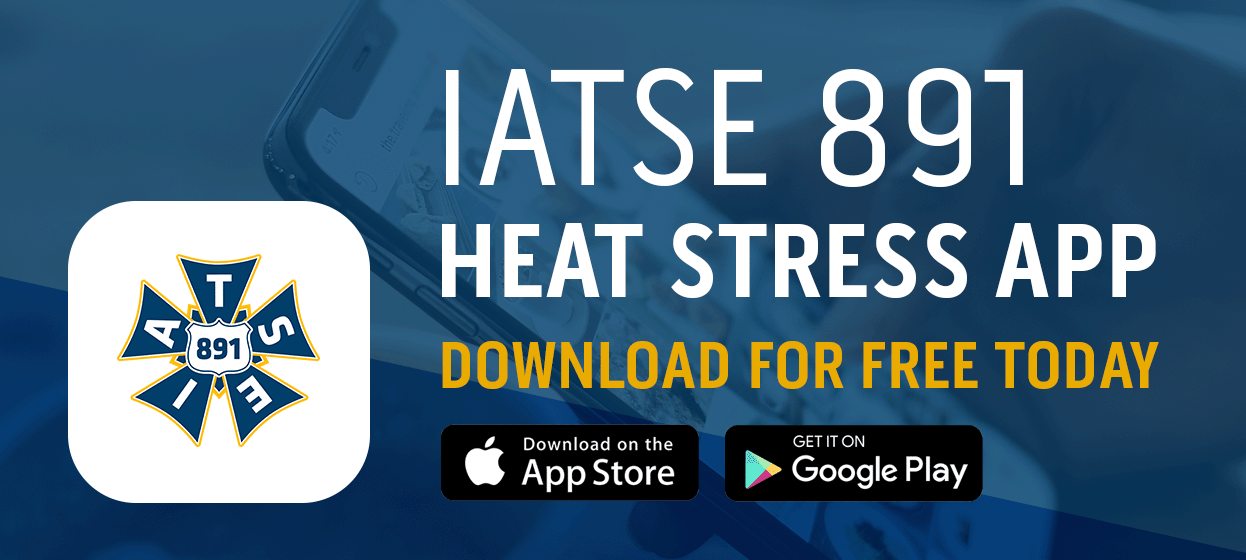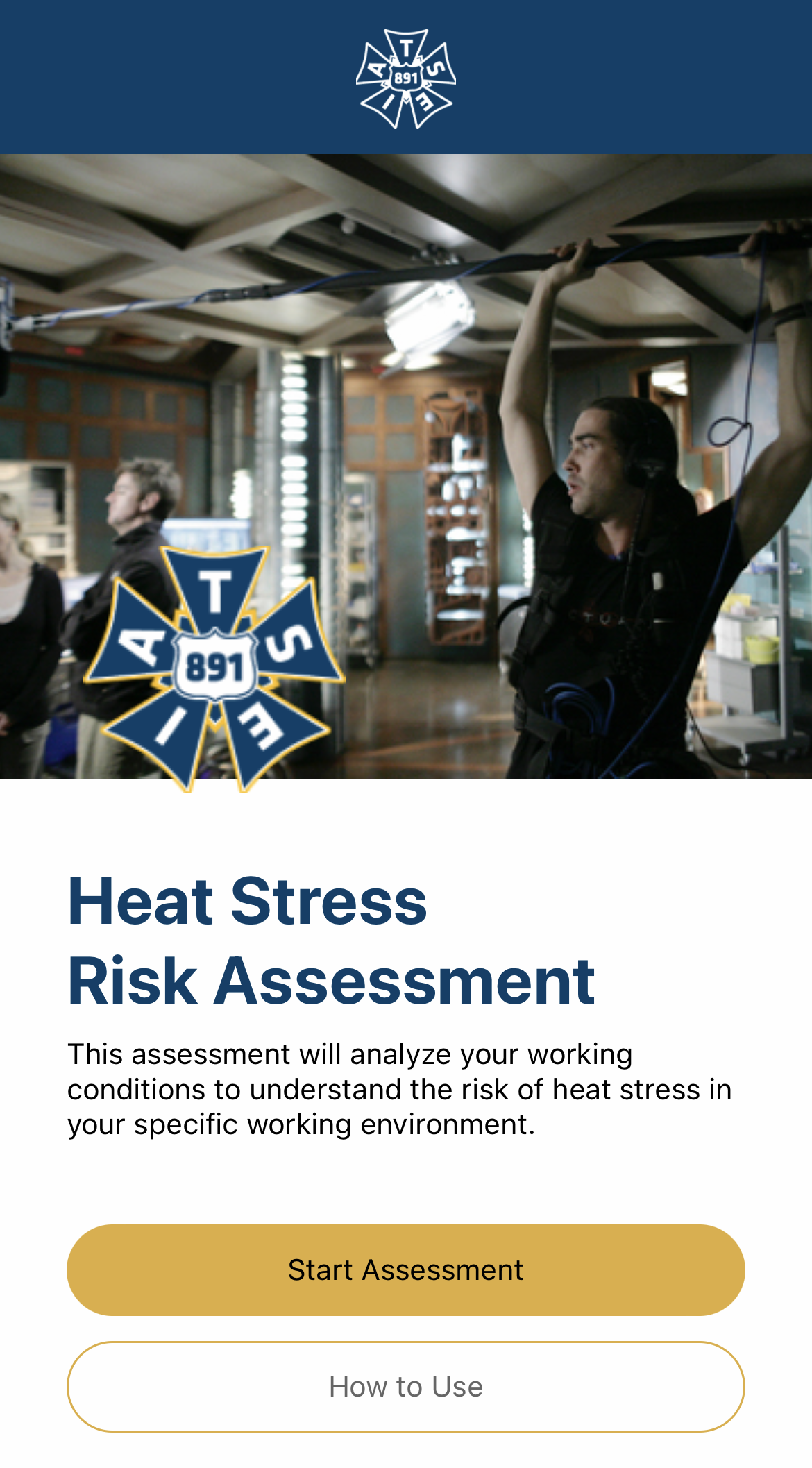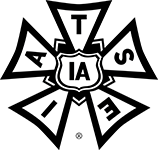

.
Click here to download the app on your Apple device.
Click here to download the app on your Android device.

What is the heat stress app?
The App is designed to assist employers and workers in assessing risks and applying safety protocols on worksites affected by hot and/or humid weather. The app uses a heat stress risk assessment method accepted by WorkSafeBC to determine the potential for hazardous exposure to workers.Why create an app?
IATSE 891 led the creation of the App after increasingly hot temperatures in the summer of 2022 led to several heat related concerns reported by film workers in BC, some serious enough to require ambulances to transport workers to hospital. In order to help our members, as well as any workers who may be exposed to heat stress while on the job, we set out to develop a heat app that could be used with a hygrometer to determine heat stress risk for workers.How does the app work?
The App works in tandem with a hygrometer or sling psychrometer to measure temperature and humidity, which helps members analyze their risk in specific working environments – and, with heat stress results, gives them evidence of risk they can share with their supervisors and safety representatives.
What is a hygrometer and how can I get one?
A hygrometer (right) is a device that measures temperature and humidity. These devices are available through IATSE 891 for $13.50 (including tax) via info@iatse.com, or can be found through other online retailers.What do I do if the app gives me an unsafe reading?
Take a screenshot of the app reading and send it or report it to your supervisor. Your supervisor should take it to production and there should be steps taken to ensure safety bulletins and other measures are put in place to protect workers. Check out our guide on recognizing and preventing heat stress at work, as outlined by WorkSafeBC, here.The below resource is from WorkSafeBC and more info can be found on their website.
How to protect workers
The most effective way to reduce the risk of heat stress is to eliminate the source of exposure. If that's not possible, there are other risk controls to use. When choosing risk controls, start by asking yourself the questions in the following steps, which are listed in order of effectiveness.-
Elimination or substitution
Eliminating the hazard by substituting a safer process or material, where possible, is the most
effective control. A question to consider:- Can the job be done in a cooler environment?
-
Engineering controls
Making physical modifications to facilities, equipment and processes can reduce exposure. Some questions to consider:
- Can ventilation be improved?
- Can hot surfaces be insulated or covered to reduce radiant heat?
- Can shields and barriers be installed to protect workers from heat?
- Can humidity be reduced?
-
Administrative controls
Changing work practices and work policies, awareness tools, and training can limit the risk of heat stress. Some questions to consider:
- Can warning signs be posted in the work area?
- Can cool-down rooms be provided?
- Can workers be acclimated to heat?
- Can water be provided?
-
Personal protective equipment
This is the least effective control. It must always be used in addition to at least one other control.
Some questions to consider:- Do workers have heat-reflective clothing or water-cooled suits?
- Has personal protective equipment been tested to make sure it is working properly?








